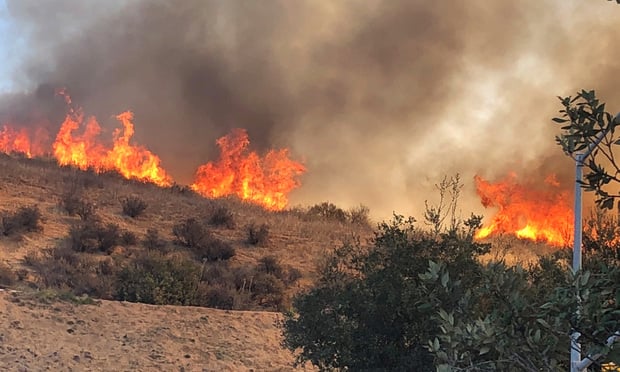?Perfect Storm' Still Raging For Reinsurers
By Michael Ha
NU Online News Service, Sept. 24, 3:00 p.m. EDT, New Orleans?The turbulent global economic climate, which saw an unprecedented collision of financial woes hit the reinsurance industry in 2002, continues to rage, an industry expert told an insurance conference here.
John Hamblin, underwriter at London-based Cathedral Capital, which manages Lloyd's Syndicate 2010, speaking at the annual National Association of Mutual Insurance Companies convention, said that the roots of the current volatile conditions for reinsurers can be traced back to the close of the 20th century.
"Raging bull markets and the dot-com boom caused many to forget business fundamentals. Greed overcame discretion," said Mr. Hamblin.
"Like insurers, some reinsurers invest heavily in equity markets, and up until the end of 1999, this left many of them with apparently robust balance sheets, which enabled them to offset growing legacy losses from the past: asbestos, pollution and the like," he said.
But poor performances by U.S. stock markets following the dot-com bust impacted not just U.S. companies but also others around the world, Mr. Hamblin pointed out: "The Dow Jones showed a decline of some 27 percent to the end of 2002. It has been said that if Wall Street sneezes, London catches a cold. But in this case, Wall Street had the cold and London caught pneumonia."
He also noted that reinsurers invest heavily in bond markets, but 2002 saw record defaults in bonds with collapses of Enron and WorldCom.
Furthermore, the Sept. 11 event will continue to hurt reinsurance companies for years to come, Mr. Hamblin predicted. Initially, he said, the part 9/11 played in "the perfect storm" of conditions that developed "was to suck large amounts of short-tail cash out of the system, forcing some to cash in investments, which were already at a low point, to meet their obligations. It tested the insurance and reinsurance industry to the limit."
Still, most reinsurers survived--reinsurance rates in most lines were set to rise sharply in response to a $40 billion CAT loss, he said. "Those survivors probably felt pretty good--they felt they had survived the unsurvivable, little knowing that the worst was still to come."
In 2002, he noted, the storm continued to strengthen with falling stocks and bond markets, declining interest rates, and rising legacy losses, as well as 9/11. "Immediately after Sept. 11, rating agencies began to downgrade," Mr. Hamblin noted, adding that the pressure gathered on ratings and capital bases resulted in significant withdrawals from the reinsurance arena.
"Largely, this withdrawal has come from insurance companies with reinsurance arms, notably AXA Re U.S. branch, Gerling Re and Hartford Re," he explained. "The demand on capital, coupled with volatility of reinsurance results and the fact that often the reinsurance book clashed heavily with the parent company in the same loss--all this forced companies to return to what they see as their core."
Regarding Sept. 11 losses, Mr. Hamblin forecast that once physical-damage claims are met, it will be "many, many years" before all the claims are finally resolved: "I suspect this will not occur in my lifetime. It is worth remembering that the previous terrorist attacks on the Twin Towers in 1993 generated a number of casualty claims and lawsuits, not one of which had been settled by Sept. 11 of 2001."
Mr. Hamblin also argued that the light catastrophe-claim figures for 2002 were not as good as they first appeared to be. "2002 was noteworthy in the U.S. market as being a light year for catastrophe claims, with estimates of total CAT losses at just under $6 billion, compared to an annual figure of near $10 billion," he noted.
"You would think this would have given the reinsurance industry a breathing space to recover from their disappointments on the investment side," he told NAMIC members. "But if you adjust losses to exclude 9/11, 2002 is only slightly better than the average year for CAT claims in the United States." And there was no relief for European reinsurers either, he commented, as the market in Central and Eastern Europe suffered a series of flood losses totaling some $3.2 billion of insured losses.
Additionally, in 2002 many reinsurers saw huge increases in casualty claims arising not just from the soft market of the late 1990s in the directors & officers and errors & omissions, but also from long-tail asbestos and latent disease claims.
Asbestos, he said, continues to be a problem. In some 80 percent of new notices of claims, "the claimant has no injury and no illness," Mr. Hamblin said. At least, with asbestosis, there is a potential government deal on the table, but "where politicians are involved, don't hold your breath," he advised.
Mr. Hamblin also pointed out that the industry is facing ever-more lawsuits and class actions, the latest being obesity cases, which is even gathering pace in Europe. "And if you still believe mold doesn't affect you, I suggest you talk to one of your Texan colleagues. Many attorneys seek to create disputes rather than solve them, and the U.S. court system allows it to happen. So I think reserving for potential long-tail claims is an impossible task."
Mr. Hamblin also observed that because of the knock-on effect of higher casualty claims and the time 9/11 will take to settle, reinsurance recoverables are now at record levels.
"This has greatly increased the potential for credit risk or a reinsurer's failure to pay. After all, having passed a claim reserve onto a reinsurer is not the end of the cedant's risk: it simply takes the form of a credit risk until the claim is finally settled."
So where does this perfect storm leave the reinsurance industry in 2003 and beyond? "Well, the storm is not yet over. And as a result, all the damage is not yet done for reinsurers," he said.
Want to continue reading?
Become a Free PropertyCasualty360 Digital Reader
Your access to unlimited PropertyCasualty360 content isn’t changing.
Once you are an ALM digital member, you’ll receive:
- Breaking insurance news and analysis, on-site and via our newsletters and custom alerts
- Weekly Insurance Speak podcast featuring exclusive interviews with industry leaders
- Educational webcasts, white papers, and ebooks from industry thought leaders
- Critical converage of the employee benefits and financial advisory markets on our other ALM sites, BenefitsPRO and ThinkAdvisor
Already have an account? Sign In Now
© 2025 ALM Global, LLC, All Rights Reserved. Request academic re-use from www.copyright.com. All other uses, submit a request to [email protected]. For more information visit Asset & Logo Licensing.








